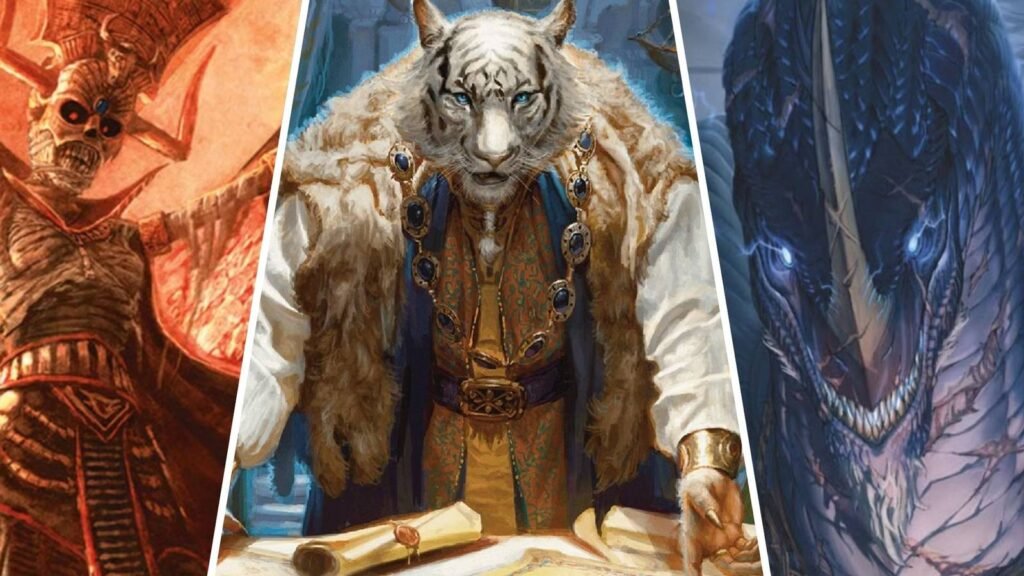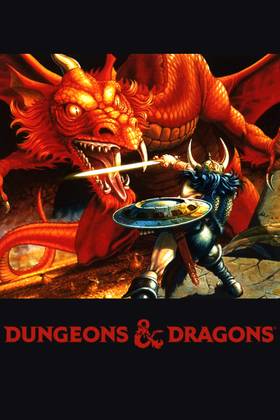
A monster from Dungeons & Dragons has a difficult task ahead of them. They’ll have a full group of people trying to kill them, with their powerful abilities, teamwork, and a high number of attacks between them. Thus, a monster will need their own strong abilities to retaliate.
Still, sometimes these strengths can feel like cheats to the players. Not that they actually are, as the monster does need extra help to be a menace against a group, but it can still feel that way depending on what their abilities and spells allow them to actually do. All that matters is that the boss offered a challenging encounter, right?
Legendary Resistance
A Classic
Few things hurt as much as using a powerful spell on the boss only for the DM to tell you they passed the skill check and will suffer fewer consequences of your spell or attack – usually they halve the damage taken at a minimum. Often the cause of frequent passes is Legendary Resistance, which can override a fail.
If your DM is not open about when they’re using it, it’s hard to tell if they’re actually using the feature or just straight-up fudging rolls, and this can be a somewhat decent excuse for them to cheat and get away with it.
Free Casting
What’s A Spell Slot?
Monsters, now more than ever, don’t really have to worry about spell slots. After all, having to remember each monster’s number of available spell slots can be annoying. So, most of them can cast a spell once or even a few times per day.
Some creatures can freely cast some high-level spells during combat, or they can freely cast spells that can get annoying for players, like the famous Counterspell. Sure, Counterspell was nerfed, but still.
Keep Your Saving Throws
During the 2024/5 update, many high-level monsters gained the ability to automatically cause conditions with their attacks, without the target rolling a saving throw to escape them right away.
Regardless of whether you think that’s a good or bad design decision (though, to be fair, we think it’s good), that does make monsters stronger, and it may catch older players by surprise when they just get paralyzed or something without rolling to try and prevent it. Despite it being in the rules, it feels very much like a cheat for the DM.
Reflective Carapace
From Tarrasques
To be fair, this feature belongs to the Tarrasque, the monster with the highest CR in the game, so it gets to be overpowered. Still, this feature can be cheat-like, especially given how much it weakens the spellcasters in the party.
Basically, Reflective Carapace allows you to annul any spell that rolls an attack to hit the target, along with Magic Missiles. There’s also a 1 in 6 chance that this spell attack is going right back at whoever cast it, which is nice (for the Tarrasque).
Greater Magic Resistance
From Rakshasas
We’re not done with monsters who are powerful against spellcasters, as Rakshasas have two power traits from their Greater Magic Resistance: They automatically pass saving throws against spells, and spells with attack rolls automatically miss them.
This feature is actually slightly different from the 2014 counterpart, which makes them completely immune to any spells of level six or below – this means your Fireballs will at least give them half damage. The new version works regardless of the spell’s level, though, so one inverted hand gives, and the other takes away.
Slaying Bow
From Solars
Once per turn, a solar can use Slaying bow and force an enemy into a dexterity saving throw, with an attack that deals an average of 60 hit points of damage. Since this is a CR 22 creature, that seems like a decent amount of damage for them to deal. But there’s more.
If the target fails the roll and happens to have 100 hit points or fewer, they die. No damage roll, no death-saving throws, just death itself. Again, it’s not a bad feature given their level, but being able to just straight-up kill someone with something that isn’t a spell (aka something that can’t be counterspelled) is rough – for the players.
Mind Control
Your Turn Is Mine
Sometimes, it takes a while for your turn to pop back up, especially if there are a lot of enemies in the fight, helping NPCs, or if the spellcasters are taking too long just to decide they’re throwing Fireball again.
Thus, it’s even worse if your action is taken from you by the enemy. Whether it’s an NPC charm-like feature or easy access to spells like Dominate Monster, having your turn used against your allies sucks.
Cheat-Death Features
Back To The Nine Hells, I Guess
Finishing off a powerful BBEG in an epic showdown is one of the highlights of D&D. Thus, sometimes it can feel a little cheap when they go through a lot of trouble killing the bad guy just for them to have a feature that lets them survive after reaching zero hit points.
Sure, it’s a good way to bring the villain back, and it can be an amazing return if done properly, but there are ways to make them come back without feeling cheap, and that pressure falls a lot on the DM.
Lowering Maximum Hit Points
Or Ability Score Values
There are other ways to die rather than just failing at your death-saving throws. For one, you can be instantly killed like in our solar example, but your maximum hit points can also be lowered, and losing them all is an instant death.
The same applies to ability scores, which can also be lowered, and reaching zero is also an instant death. Plus, depending on which creature did this to you, recovering these lost points is harder than just resting.
Truesight
You Can’t Hide From Me
Most high CR monsters have access to Truesight, which basically means you can’t hide or fool them. They can see invisible beings, the true form of people who are transformed, and they can see through illusions, and darkness, normal or magical.
So, if you’re expecting to catch the BBEG by surprise, you’re probably going to be disappointed, as they’ll see right through your shenanigans and laugh about it as they start to punch you.

- Original Release Date
-
1974
- Player Count
-
2+
- Age Recommendation
-
12+ (though younger can play and enjoy)
- Length per Game
-
From 60 minutes to hours on end.
- Franchise Name
-
Dungeons & Dragons
- Publishing Co
-
Wizards of the Coast










